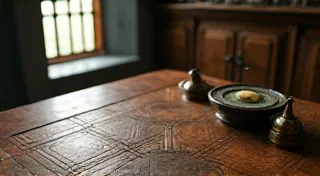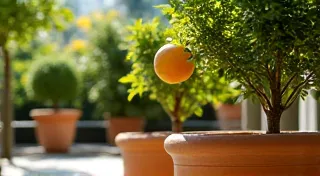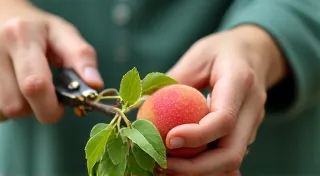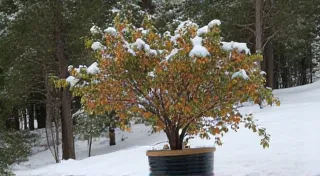Cartography of Sunlight: Mapping Microclimates for Container Fruit Bounty
There’s a particular resonance I find in antique accordions. Not just the music they coax, though that’s undeniably enchanting, but the palpable sense of human touch embedded in their creation. The meticulously crafted reeds, the hand-planed keys, the often-faded bellows – each element whispers of dedication, patience, and a commitment to enduring beauty. It's a reminder that even within confined spaces, complex and beautiful systems can thrive, if given the right conditions. And much like understanding the intricate mechanics of an accordion allows you to coax its fullest potential, so too does understanding sunlight’s influence on our containerized fruit trees allow us to unlock a surprising abundance.
Growing dwarf fruit trees in containers is, in essence, a miniature ecosystem. We're recreating, in a pot, the conditions that allow an orchard to flourish. While many beginners focus on soil composition and watering schedules, the crucial, often overlooked element is light. Optimizing sunlight exposure isn’t merely about placing a pot near a window; it’s about understanding and manipulating what we call microclimates – tiny, localized variations in temperature, humidity, and, crucially, light intensity. It's about being a cartographer of sunlight, charting its journey and leveraging it to your advantage.

The Fundamentals: Beyond Just “South-Facing”
The common advice – “place your trees in a south-facing location” – is a good starting point, certainly. But it’s an oversimplification. Even within a single south-facing wall, light intensity can vary dramatically based on building height, surrounding structures, the angle of the sun throughout the year, and even the reflectivity of nearby surfaces. A tree positioned directly beneath a tall brick wall will receive a significantly different light profile than one next to a light-colored stucco exterior.
Consider the seasonal shifts. During summer's high-sun angle, light penetrates deeper. But as winter approaches, the sun’s path becomes lower, shadows lengthen, and previously sunny spots become shrouded in gloom. A tree that thrives in summer might struggle severely during the shorter, darker days of winter. This is where careful observation and planning come into play, and understanding the basic principles of choosing the right location for your container-grown fruit trees is essential to long-term success. Keep a notebook, sketch the shadows, and note the hours of direct sunlight received by different locations.
Reflecting on Light: Utilizing Reflective Surfaces
One of the most impactful techniques for enhancing light exposure is the strategic use of reflective surfaces. Light doesn’t just come from the sun; it bounces. A light-colored wall, a sheet of white mylar, even a strategically placed mirror can significantly increase the amount of light your dwarf fruit trees receive.
Think of the effect it has on a room. A dark room feels smaller and more constricted. But paint the walls a light color, add a mirror, and the space instantly feels brighter and more expansive. The principle is the same for our container fruit trees. Walls painted white or a very light cream color will reflect more light than darker hues. Mylar sheeting, often used in hydroponics, is an even more effective reflector, capable of bouncing almost all incident light. Just be mindful of the angle – too much direct reflection can scorch leaves, so experiment cautiously.
Screens and Shadows: A Dance of Light and Shade
It's not just about adding light; it's about managing it. While intense sunlight is vital for photosynthesis, too much, especially during the hottest part of the day, can stress your trees and even damage the leaves. Strategic shading becomes just as important as maximizing light exposure. Proper pruning and care are also vital for successful harvests – you can find guidance on pruning and maintaining your dwarf fruit trees in containers for maximum yield.
Imagine the skilled craftsman carefully tuning the reeds of an accordion – each adjustment is crucial to the final sound. Similarly, manipulating shadows and creating dappled light can be incredibly beneficial. A sheer curtain, a bamboo screen, or even a strategically placed larger plant can filter the sunlight, providing a gentler, more diffused light source. This is particularly important for young trees or varieties that are known to be more sensitive to sunburn. Consider the role of water as well – consistently providing adequate hydration is key to helping your trees withstand periods of intense sunlight and heat.
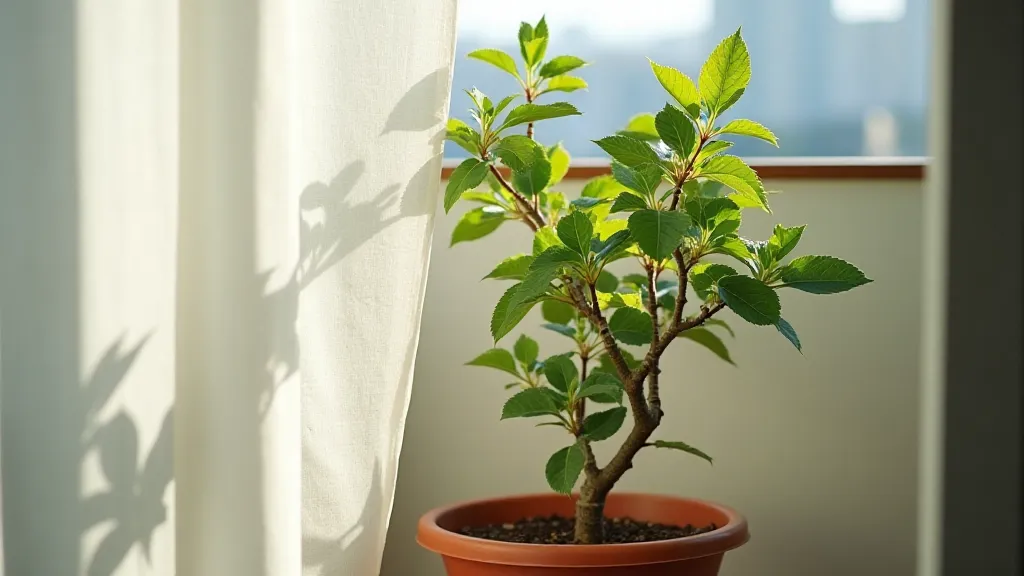
Microclimates in Miniature: The Art of Observation
The true skill in container fruit growing isn't just applying these techniques; it’s understanding how they interact within your specific microclimate. It requires careful observation, experimentation, and a willingness to adapt. Think of a collector restoring an antique accordion - examining every part, understanding its purpose, and painstakingly bringing it back to its original glory.
Pay attention to temperature fluctuations. A location near a heat source (like a radiator) might provide warmth during cold snaps but could also dry out the soil more quickly. Areas with good air circulation are less prone to fungal diseases, but they can also increase water loss. Every corner of your space possesses a unique microclimate, and it’s your job to map and understand it. Understanding these complexities is also why careful consideration of watering wisdom is essential for keeping your trees hydrated and thriving in their containers.
The Importance of Soil and Nutrients
While sunlight is a critical factor, don’s overlook the foundational needs of your dwarf fruit trees. The soil you choose plays a direct role in their ability to uptake sunlight's energy. A well-draining, nutrient-rich potting mix is essential for healthy root development and robust growth. Consider incorporating organic matter, such as compost or well-rotted manure, to improve soil structure and fertility. Regular fertilization is also important, especially during the growing season. Choose a fertilizer specifically formulated for fruit trees, and follow the instructions carefully. Over-fertilizing can be just as harmful as under-fertilizing.
Propagation and Expansion
As your passion for container fruit growing deepens, you may find yourself wanting to expand your collection. Propagation offers an exciting way to create new trees from existing ones. Grafting is a popular technique that combines the desirable traits of two different varieties, such as disease resistance from one and delicious fruit from another. It’s a slightly more advanced technique, but the rewards are well worth the effort. Learning about DIY grafting can unlock even more possibilities for your container fruit orchard.
Troubleshooting Common Issues
Even with the best care, your dwarf fruit trees may occasionally encounter problems. Pests, diseases, and nutrient deficiencies can all impact their health and productivity. Early detection and prompt action are crucial for preventing minor issues from escalating into major setbacks. Regularly inspect your trees for signs of pests, such as aphids, spider mites, and scale. Treat infestations promptly with appropriate insecticides or horticultural oils. Similarly, be vigilant for signs of diseases, such as powdery mildew, rust, and leaf spot. Ensure good air circulation and avoid overhead watering to minimize the risk of fungal infections.
Beyond the Practical: The Joy of Connection
Ultimately, growing dwarf fruit trees in containers is more than just a horticultural pursuit; it’s a connection to the natural world, a tangible reminder of the beauty and resilience of life. It’s about nurturing something, tending to its needs, and witnessing its quiet triumph. Like the satisfaction of restoring an antique accordion and hearing its melodies resonate once more, the first bite of a homegrown fruit, nurtured by your own hands, is a reward unlike any other.
The dance of light and shadow, the manipulation of microclimates – these are the tools we use to cultivate abundance in confined spaces. And in doing so, we discover not only a bountiful harvest but also a deeper appreciation for the intricate beauty of the world around us.

